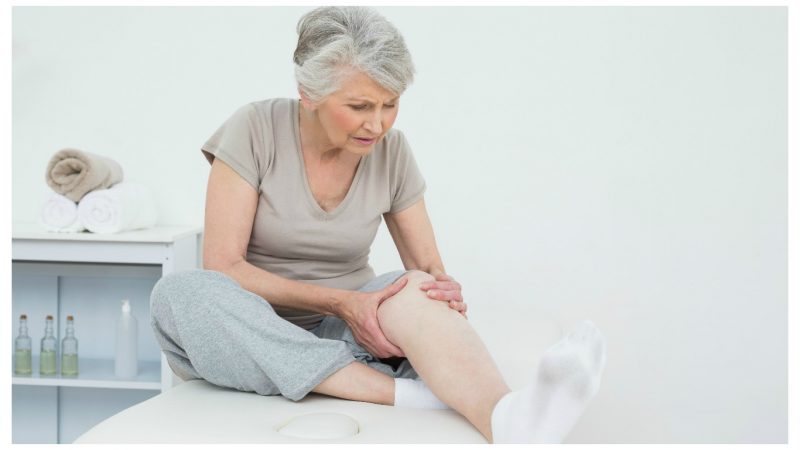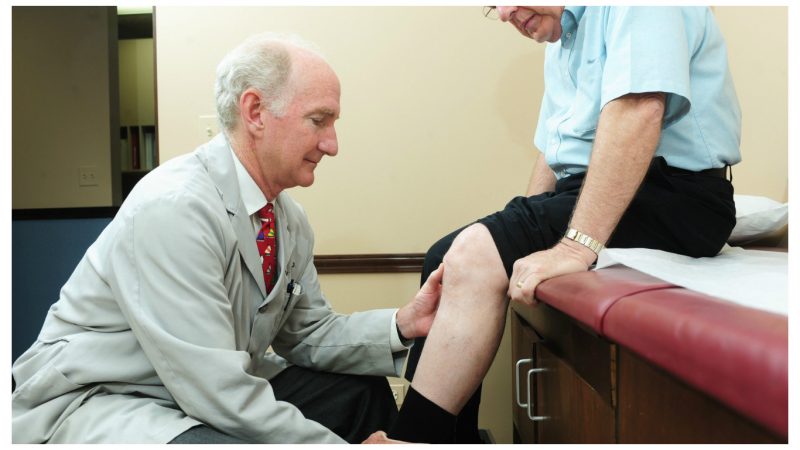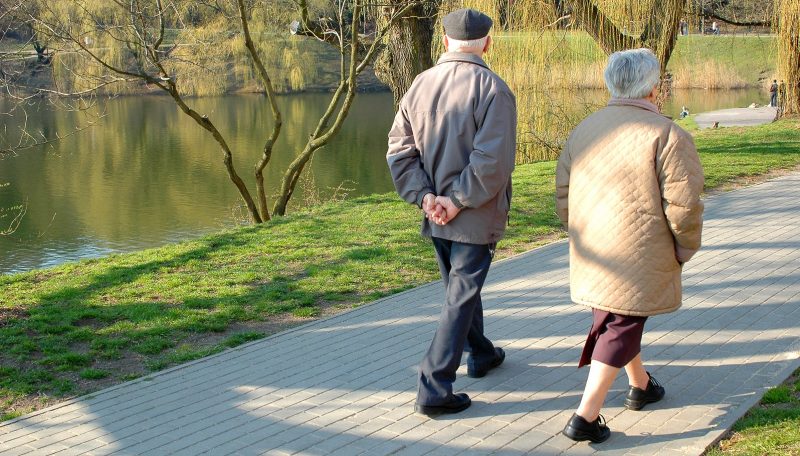Leg swelling is caused by the accumulation of fluid in the tissues and can be aggravated when people consume too much salt, sit for a long time or suffer from additional health problems. While swelling of the legs does not always indicate a serious illness, it is a symptom that cannot be ignored, especially if it is repeated regularly.
Material Content:
Causes of Edema in the Elderly
With the aging process, blood circulation and the process of blood delivery to peripheral tissues and back to the heart are weakened. As a result, more and more fluid accumulates in peripheral tissues, which leads to leakage of accumulated fluid into the surrounding tissue. Typically, such clusters are observed in the most vulnerable places in people, such as the lower limbs, and in particular the ankles. In addition to these places, fluid can also accumulate in the knees and even inside the hips, depending on the cause and nature of the fluid leak.

In addition to age-related circulatory dysfunction, the causes of edema on the legs can be in concomitant diseases. The inability of the heart to pump blood adequately leads to the accumulation of fluids in the lower extremities, while kidney failure will lead to an increase in the amount of fluid in the body, since the ability of the kidneys to excretion can be significantly reduced.
At the same time, local causes can also lead to edema of the legs - the formation of blood clots in the legs, as in the case of deep vein thrombosis, cellulite and inflammatory conditions. Leg injuries can also cause edema, and fractures especially affect the elderly because of their increased susceptibility to falls and bone fragility.
There are many reasons why leg swelling in older people. Edema can also be a natural reaction caused by prolonged standing or pregnancy. In these cases, it is not a serious disease and is temporary. However, cases where edema reappears cannot be ignored.
Symptoms of leg swelling
Symptoms may vary depending on the underlying cause of leg swelling.

The following are some of the most common symptoms that are accompanied by leg swelling:
- swelling of the tissue;
- traces that arise when removing shoes or socks;
- skin color is often normal or slightly pale, however, has indentations of a darker color;
- edema, which is eliminated when raising the legs above the level of the heart (non-serious cases);
- edema that does not resolve when raising the legs above the level of the heart (serious cases);
- hard reddish skin, or pale, spotty (serious cases).
Edema often becomes more noticeable after sitting or standing for a long time, and can be affected by the diet and the amount of fluid you drink.
When swelling of the legs is accompanied by shortness of breath, chest pain, yellowish pigmentation of the skin, scanty urine, fever, redness of the skin on the legs, pain, difficulty in moving the joints, etc., you should seek the advice of a doctor before self-medication. .
Diagnosis of diseases in the elderly
If the swelling subsides when you raise your legs to a level above the heart, then you can do it by wearing compression stockings, since such underwear can exert constant pressure on the blood vessels and, therefore, prevent the accumulation of fluids in the lower limbs.
It is interesting: cleaning vessels with folk remedies, freeing them from cholesterol
If you have an acute form of leg edema that does not go away and there are symptoms such as excessive fatigue, this meets the criteria for a more serious underlying condition and should prompt you to see a doctor right away. Pigmentation and pain in the lower legs are also markers of a dangerous condition.

When visiting a doctor, diagnostic tests will be performed to identify the root cause of the swelling.
Standard diagnostics include:
- general blood test, or analysis for biochemistry;
- an x-ray of the chest or limbs;
- electrocardiogram (ECG);
- Analysis of urine.
Below are some possible variations on ankle edema in older people.
Dropsy
This medical term is characterized by poor circulation in the body, which leads to the accumulation of fluid under the skin. Edema increases with age, as the veins cease to function normally. This leads to fluid trapping in the intracellular spaces, which leads to patients experiencing edema in places such as the ankles. Edema can be a sign of a serious health condition, as it is also considered as heart failure, renal failure, and liver failure.
Lymphedema
The lymphatic system has an important role in blood circulation. A network of lymphatic vessels supply fluid called lymph to the heart and other parts of the body. Lymphatic fluid often contains white blood cells associated with infection and helps the body get rid of toxins, waste, and other unwanted materials. If this fluid movement is blocked, it can lead to swelling of various parts of the body, including the ankles. If the problem is not addressed promptly, an increase in lymph may worsen wound healing and lead to infection and deformation.
Gout
Gout occurs due to the accumulation of urate crystals in the joints, causing inflammation and severe pain. These crystals can form in the presence of a high concentration of uric acid in the blood.Your body produces uric acid to break down purine substances that are naturally found in the body, as well as in certain foods, such as meat, meat offal, and seafood. Other foods that increase uric acid levels include alcoholic drinks and drinks sweetened with fructose (fruit sugar).
Gout can manifest as sudden pain in the joint, swelling, and an increase in local temperature.
Arthritis
Arthritis is the most common cause of swollen legs in the elderly, when the joints begin to degenerate, pain and swelling occur. There are many forms of arthritis, but they all have common inflammation, which leads to joint pain, swelling and decreased mobility. Autoimmune conditions, diseases, and simply aging lead to the development of arthritis.
Ankle bruise
Accidental injuries can occur at any age, but older people are more susceptible, as their bones tend to be brittle. Even a slight ankle sprain can cause a fracture, which leads to excessive swelling and discoloration of the skin. Being overweight can also cause a fracture, as there is excessive pressure on the joints that carry weight.
Deep Vein Thrombosis
The blood clot that developed in the veins of the legs blocks the main veins in the legs, which leads to further complications with blood drainage. The most alarming is that a blood clot can come off, turning into a free-floating blood clot. If this happens, he is potentially able to end up elsewhere in the body, causing life-threatening conditions such as pulmonary embolism or even a stroke.
Treatment options
In some cases, doctors may prescribe diuretics - medicines to extract excess fluids from the body through urine. Although soft diuretics are prescribed quite often, strong diuretics are used when there is no threat to the heart and kidneys.

Anti-inflammatory drugs can also help reduce swelling to a certain extent, although their effects are mostly indirect. In case of thrombosis, doctors will conduct further studies and may prescribe blood thinners to prevent further clot development. In case of infection, antibiotics may be necessary along with painkillers, since such tumors are usually painful.
Another way to reduce fluid accumulation is to limit salt-containing products, and in some cases, when the kidneys are unable to process more than a certain volume, patients restrict fluid intake.
Finally, exercises and some massage techniques may also be necessary to relieve leg swelling. They need to be taken only after consulting a doctor, as some exercises can worsen the situation.
Home treatment
If the edema is not caused by any serious reasons, it will be enough to simply reduce the pressure on the sore leg. Raising your legs on a sofa or chair can be a great option for relieving leg swelling in old age. Placing an ice pack on a raised leg can also provide relief.
Below are some additional home remedies for relieving edema:
- grinding and baths with vinegar, with alternating hot and cold compresses, diluting vinegar with hot and cold water;
- walks that do not allow your blood to stagnate and provide good circulation;
- Vitamin E-rich foods such as spinach, almond oil, sweet potatoes, sunflower seeds, and wheat germ.

If you suspect that leg swelling is causing your drug, talk to your doctor before stopping it.
Exercises for swollen legs in the elderly
Lie on your back, or do this exercise while sitting. Lift your legs, point your toes forward, and then stretch them in the opposite direction.Perform about 30 repetitions three times a day.
It is also an exercise: while sitting or lying down, tighten the gluteal muscles. Try to maintain tension for a few seconds, and then relax. Take a few seconds to break, then repeat. Perform 10 exercises three times a day.
The third exercise: lying on your back, bring one knee to your chest. Now return the leg to its original position. One leg should remain extended and motionless while the other bends. Change your foot and repeat the action. Try to do about 10 repetitions, three times a day.
Risk Factors and Prevention
The risk of developing leg edema most often exists in people with heart failure, so even the special term “cardiac leg edema” has appeared. Symptoms are also common in people with hypertension, liver disease, and kidney disease. In cases where swelling is not accompanied by a serious illness, simple measures such as regular exercise, salt control in the diet and ankle massage at the first signs of swelling are quite effective. Sleeping with slightly raised legs also prevents the appearance of fluid during the night. Adequate hydration is also important, as water is a natural diuretic. Older people with early signs of heart failure or kidney disease should follow their doctor’s recommendations and make the necessary lifestyle changes to prevent them from getting worse.












